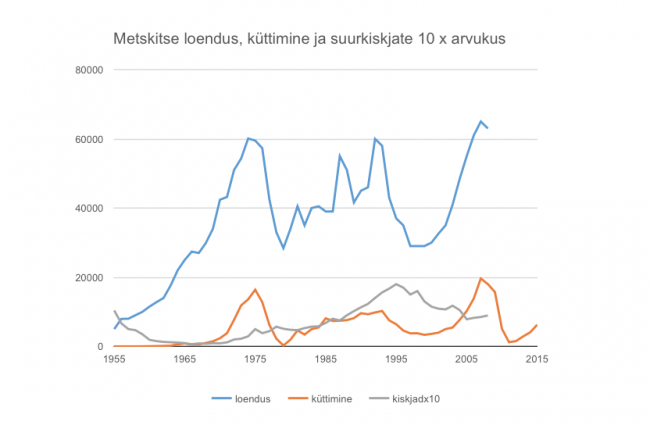How many roe deer live in Estonia? This apparently simple question is difficult to answer if not downright impossible. Of the data in the graphs we can only use the big peaks and lows for calculations. Why is that?
In the graphs we can track the dynamics in the number of roe deer according to the official counts, with hunting data and the numbers of large carnivores as a background. In fact the real abundance throughout the whole census period was several times higher. We can state this from the results of battue counts, the number of roe deer slain by large carnivores in a period interpreted by new methods and new knowledge about the ecology of the species. This is also why such counts have been terminated since 2009. While the trends for large carnivores at least are adequate and also the actual numbers relatively correct - although somewhat exaggerated – for roe deer only the lows and peaks in the counts are reliable. Whether there were more roe deer in 1973-75 or in 2005-2007 is not clear. At the first date we had to do with so-called farm forest roe deer, at the second with wild forest roe deer who benefitted from the intense forest fellings that produced a significantly improved food basis. The first (extremely sudden) fall in abundance came during winters of average severity and was rather due to a weak population and a low number of large carnivores who should have acted as sanitarians. The 2009/10 and 2010/11 winters were truly severe and caused a substantial fall in the abundance of roe deer. The decreased abundance of roe deer in the 1990s, as of elks and wild boar, was the result of activities of large carnivores.
Tiit Randveer



